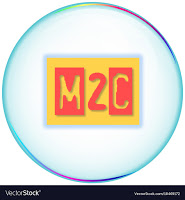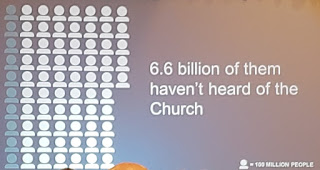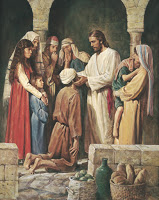M2C web part 4 – Why EME matters
But, as President Nelson taught in the last General Conference, “I know that good inspiration is based upon good information.”
The M2C scholars at BYU and CES have methodically deprived members of the Church of good information.
That’s really my only problem with what they’re doing. Disagreeing about the significance, relevance, or interpretation of the information is fair, but censoring it is not.
_____
The easy way, which most people take, is to defer to the experts. We’re all busy. We all have our own interests and priorities. It’s only rational to let the experts do the work and tell us what to think.
Plus, we have the 14th Article of Faith.
On top of that, all is well in Zion; Zion prospereth. The Church is building more temples. The economy along the Wasatch front is fantastic. People are building bigger and better houses, buying new cars and boats, going on vacations. Unemployment is low.
BYU and CES students (and missionaries) accept the fantasy map of the Book of Mormon without questioning it. Book of Mormon Central, FairMormon, and the Interpreter have all the answers; after all, they’ve been hired by Church leaders to guide the Church.
And now we have EME (the Early Modern English theory).
I know a lot of people think Book of Mormon historicity/geography is a peripheral issue.
As the famous exclamation goes, “What difference does it make?”
In a sense, I completely agree; most of what we do in the Church is focused on service and striving to become more like Christ. We all agree with that.
Yet the Book of Mormon is the instrument the Lord prepared for us to accomplish His work. The divine authenticity of the Book of Mormon is central to the message of the restored Gospel.
There are billions of people on the planet who have never heard of the Restoration, but most of those who have heard about it have rejected it as not believable.
In my view, many LDS scholars have impeded the work by confusing the message of the Book of Mormon by creating and promoting the Mesoamerican/two-Cumorahs theory (M2C). We were warned about this by Joseph Fielding Smith and other leaders, and the evidence of the fulfillment of those warnings is all around us–except maybe not along the Wasatch front?
_____
To recap this series, we’re looking at how the M2C web has distorted and corrupted LDS scholarship, creating a bubble within which these scholars work. They have successfully brought many Church members into their bubble, mainly by using (and I think abusing) their positions of trust at BYU and CES.
Most of the time in this blog I have focused on the issue of the New York Cumorah, which is a bright line. Remember, M2C is founded on the premise that the prophets are wrong about the New York Cumorah. If the prophets are correct, then M2C is false. It’s that simple.*
But the problem is far more extensive than just the New York Cumorah.
Mesomania has led many LDS scholars to doubt what Joseph Smith and Oliver Cowdery said and taught because they assume M2C and then frame everything else to fit or at least accommodate M2C. The latest example is the idea that Joseph didn’t even translate the Book of Mormon, which I’ll discuss in part 5.
Other examples of real-world impact are these:
– BookofMormonCentral deceiving readers and donors (and Church leaders) into thinking it is neutral on geography issues, when really its goal is “to increase understanding of the Book of Mormon as an ancient Mesoamerican codex.”
– BookofMormonCentral and FairMormon censoring the teachings of the prophets about the New York Cumorah and related evidence that supports and corroborates the teachings of the prophets, while also sowing confusion among the Saints on this topic to promote M2C.
– The Joseph Smith Papers skewing the search function and tailoring the notes to accommodate M2C.
– The Church History Department publishing revisionist Church history in the otherwise awesome book Saints solely to accommodate M2C.
– The Church Correlation Department editing the Joseph Smith lesson manual, commissioning and distributing exclusively M2C artwork, and many other activities to promote M2C.
We’ll eventually explore each of those examples, starting with EME in part 5.
_____
* The New York Cumorah says nothing about Book of Mormon geography other than that Cumorah is in New York. Other events in the Book of Mormon could have taken place anywhere. But if the prophets are correct, there is only one Cumorah and it is in New York.
Source: Book of Mormon Wars















